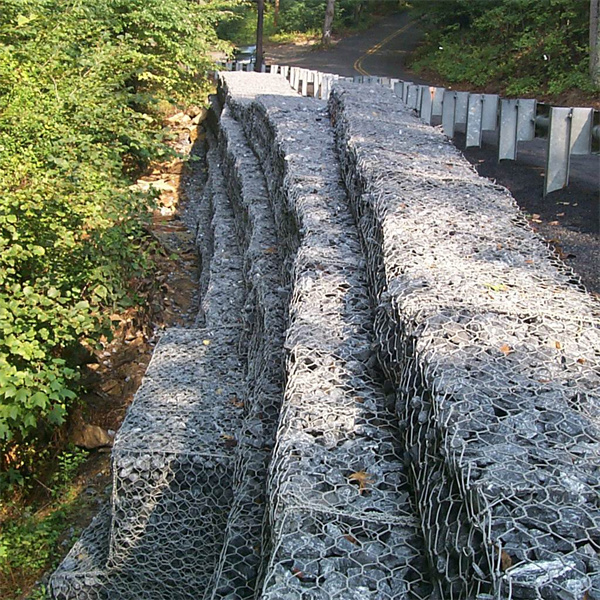aug . 02, 2024 14:36 Back to list
Exploring the Benefits and Uses of Anchoring Gabion Baskets in Construction Projects
The Role of Anchoring Gabion Baskets in Modern Engineering
In the realm of civil engineering and landscape architecture, the use of gabion baskets has gained significant traction due to their versatility, durability, and aesthetic appeal. What sets gabion baskets apart is their unique design, which consists of galvanized steel wire mesh containers filled with rocks or other material. These baskets serve various purposes, including erosion control, slope stabilization, and even decorative landscaping. However, the effectiveness of gabion baskets is heavily reliant on their proper anchoring, making anchoring systems a crucial aspect of their installation.
Understanding Gabion Baskets
Gabion baskets are typically made from hexagonal wire mesh and are filled on-site with stones or other local materials, providing both structural integrity and ecological benefits. Their porous nature allows water to flow through, reducing hydrostatic pressure behind structures and facilitating natural drainage. This characteristic is particularly valuable in preventing soil erosion along riverbanks, hillsides, and construction sites.
Importance of Anchoring
The primary function of anchoring in gabion basket applications is to ensure stability and retain the integrity of the structures they support. Effective anchoring systems reduce the risk of displacement caused by water flow, soil movement, or external forces like wind and seismic activities. Without proper anchoring, gabion baskets can shift or fail, resulting in significant structural damage and loss of functionality.
Anchoring Techniques
There are various methods for anchoring gabion baskets. The choice often depends on the specific site conditions, the purpose of the installation, and environmental factors. Here are some popular anchoring techniques
1. Rebar Anchors One common method involves using steel rebar rods driven into the ground. These rods can be attached to the gabion baskets, anchoring them securely in place. This method is particularly effective in areas with loose soil or significant water flow.
anchoring gabion baskets factories

2. Concrete Footings For projects requiring additional stability, concrete footings can be poured to provide a solid base. The gabion baskets can be set into these footings, ensuring they remain securely in place, even under heavy loads.
3. Geogrid Reinforcement In some cases, geogrid materials can be utilized to enhance the anchoring of gabion baskets. These grids are placed behind the baskets and help to distribute loads evenly while promoting vegetation growth that can further stabilize the soil.
4. Vegetative Stabilization In environmentally sensitive areas, native vegetation can be planted on the surface of the gabion baskets. The roots of these plants help to hold the soil in place while also providing a visually appealing landscape.
Quality Control in Manufacturing
For an anchoring system to be effective, the quality of gabion baskets produced by factories must meet stringent standards. This includes the use of high-quality galvanized wire to resist corrosion, ensuring durability over time. Additionally, proper manufacturing practices must be followed to ensure the baskets maintain their shape and structure under load.
As architects and engineers increasingly prioritize sustainability and resilience in their designs, gabion baskets are expected to see even broader applications. Innovations in manufacturing processes and anchoring techniques are likely to continue, enhancing their effectiveness and appeal.
Conclusion
In summary, anchoring gabion baskets is a critical component of their application in civil engineering projects. By employing effective anchoring techniques tailored to specific site conditions, engineers can harness the full potential of gabion baskets for erosion control, slope stabilization, and aesthetic enhancement. As technology advances and our understanding of environmental engineering deepens, the role of gabion baskets—and their anchoring systems—will undeniably evolve, leading to safer and more sustainable infrastructure.
-
Visualizing Gabion 3D Integration in Urban Landscapes with Rendering
NewsJul.23,2025
-
The Design and Sustainability of Gabion Wire Mesh Panels
NewsJul.23,2025
-
The Acoustic Performance of Gabion Sound Barriers in Urban Environments
NewsJul.23,2025
-
Mastering the Installation of Galvanized Gabion Structures
NewsJul.23,2025
-
Gabion Boxes: Pioneering Sustainable Infrastructure Across the Globe
NewsJul.23,2025
-
Custom PVC Coated Gabion Boxes for Aesthetic Excellence
NewsJul.23,2025
-
Installation Tips for Gabion Wire Baskets in Erosion Control Projects
NewsJul.21,2025






